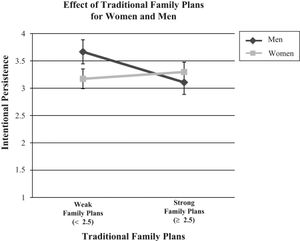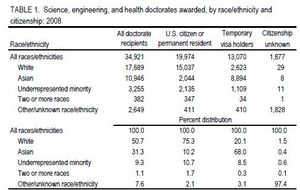Two theories have emerged to explain the low proportion of women in engineering:
- Family plans: women’s desires to care for their family lead them to choose more flexible careers.
- Self-assessment: women’s perceived deficiency in core mathematics skills lead them to opt for careers outside of science.
A group of researchers tested these theories with a longitudinal cohort of engineering students and found no evidence for them. Instead, they posit a third theory:
3. Professional role confidence: women and men develop different levels of confidence in their ability to become successful members of their profession. 
The study, published in the American Sociological Review, finds that family plans and self-assessment scores does not reduce female students’ likelihood to stay in engineering. By contrast, confidence in professional expertise predicts career persistence.
The authors speculate that these results may explain why women in medicine cluster in more typically female-friendly specialties. Fortunately, programs can help address the gap in professional role confidence by exposing students to work internships so that they can build familiarity with the profession.

 We've heard the rules for using PowerPoint effectively:
We've heard the rules for using PowerPoint effectively: